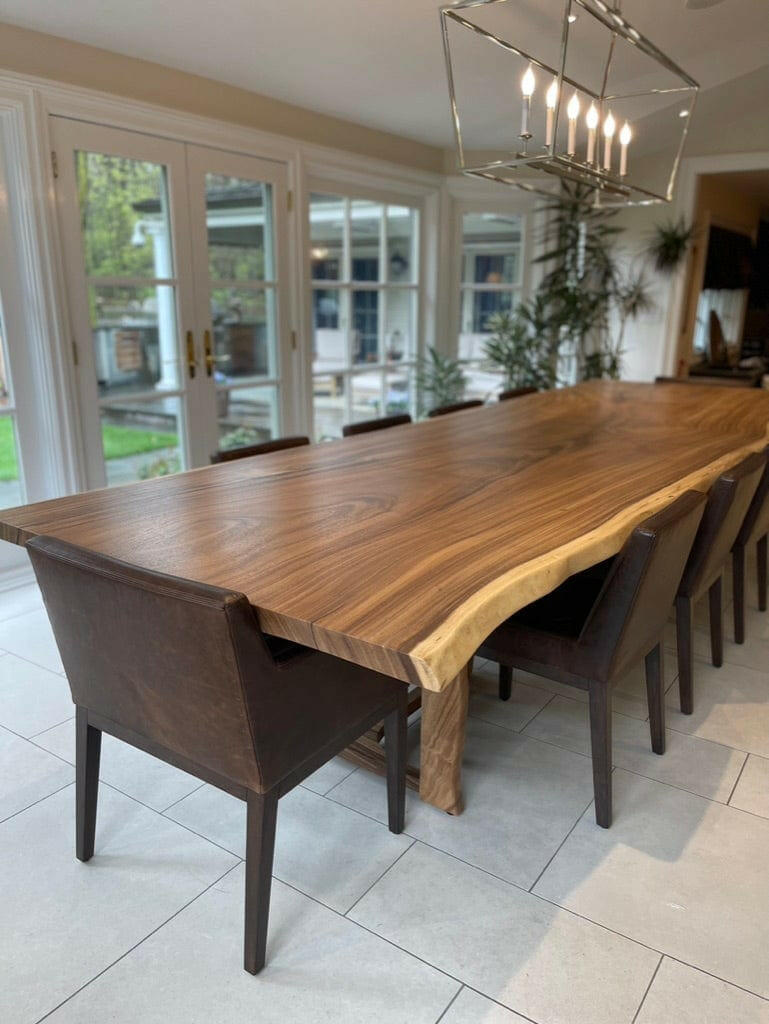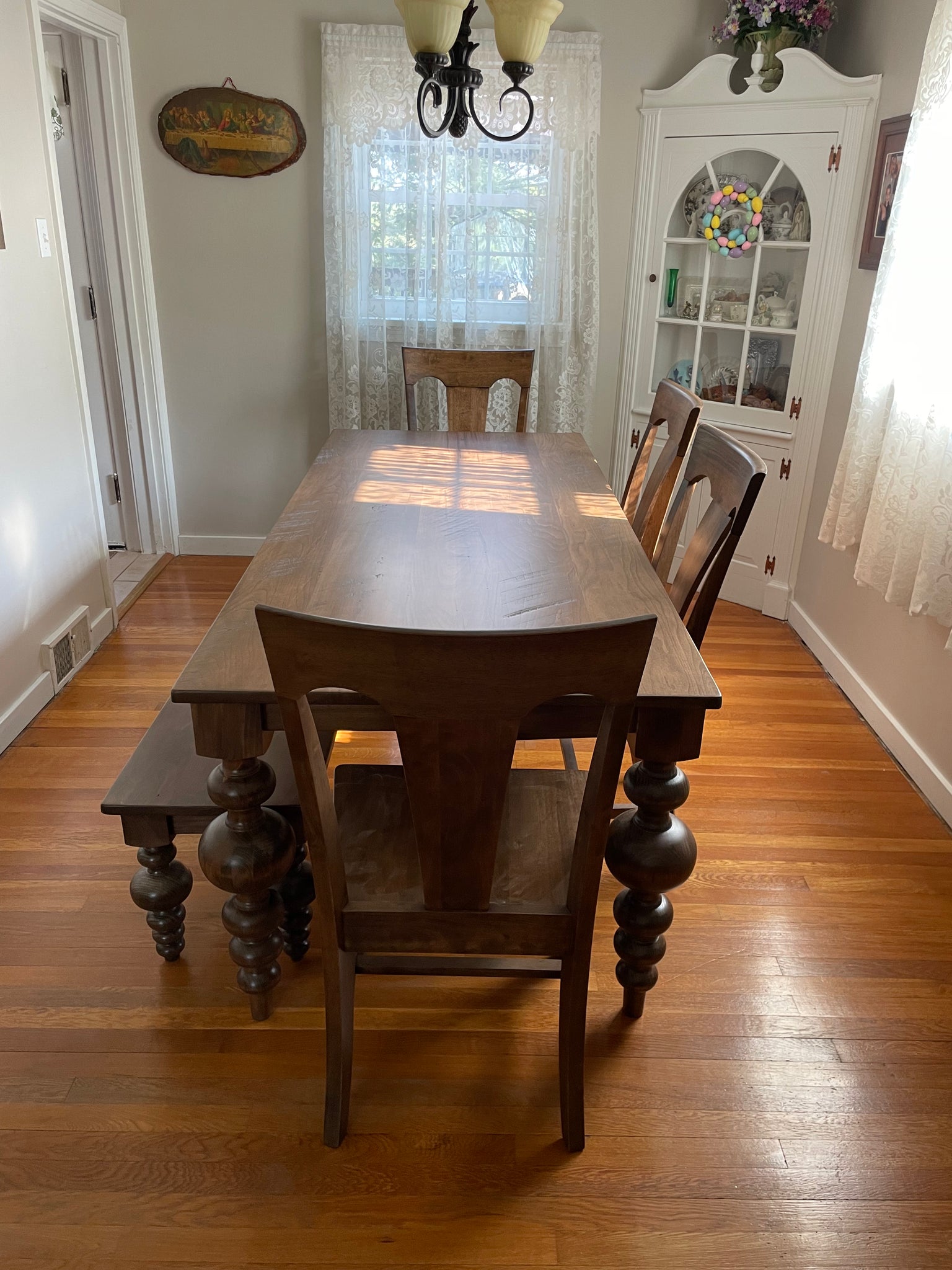How to Choose the Perfect Dining Room Table Legs for Your Home Design
How to Choose the Perfect Dining Room Table Legs for Your Home Design
Blog Article
Choosing the Perfect Eating Table: What Styles Work Best for Your Home?
Selecting the ideal eating table for your home can be a nuanced process that balances looks and functionality. To navigate these options properly and find a table that really matches your home, take into consideration the adhering to aspects in detail.
Evaluating Your Area
Reviewing the measurements and format of your dining area is an important initial action in picking the excellent table. Begin by measuring the length and width of the room, accounting for entrances, home windows, and various other building attributes that can affect table positioning. This makes certain that your table not just fits yet additionally permits for comfy activity around it.
Think about the variety of people you usually captivate. A table ought to fit your home's daily needs while offering enough adaptability for periodic guests. Generally of thumb, assign at least 24 inches of table size per individual to make sure a comfortable dining experience.
It's also vital to keep proper clearance around the table. Ideally, there should go to the very least 36 inches between the table edge and wall surfaces or other furniture, making it possible for simple gain access to and movement. For rooms where chairs with arms or extra storage devices like buffets are included, increasing this clearance to 48 inches is advisable.
Lights and environment play significant duties. Make sure that your table straightens with existing lighting components or plan for ample illumination solutions. This thorough spatial evaluation warranties that your table not just fits physically yet also integrates with your room's total functionality and visual.
Popular Table Styles

Standard eating tables usually include luxuriant information, curved legs, and rich wood coatings, stimulating a feeling of ageless beauty. They are ideal for homes with classic decor or those aiming to include a touch of class to their dining area.
Modern eating tables focus on simplicity and tidy lines, usually including materials like glass and metal. These tables are ideal for modern areas, providing a streamlined and clean look that matches minimalist design ideologies.
Rustic table, on the other hand, stress natural materials and a handmade appearance - dining room table legs. They usually include reclaimed timber and a distressed coating, producing a warm and welcoming atmosphere. These tables function well in farmhouse-style homes or those seeking a comfy, organic feeling
Industrial dining tables incorporate resources such as steel and wood, often showcasing a practical aesthetic. This style is fit for lofts or city areas, including a touch of rugged beauty and sturdiness to the eating experience.
Each style supplies distinct benefits, making it necessary to select one that aligns with your home's general layout and your personal choices.
Product Choices
When choosing a table, the choice of product plays a crucial function in establishing both the table's aesthetic appeals and functionality. Wood, steel, glass, and composite products each offer distinct advantages and obstacles, making it crucial to straighten the material with your home's hop over to these guys design and way of living needs.
Wood is an ageless and flexible alternative, available in varieties such as oak, walnut, and mahogany. Understood for its longevity and heat, wood complements both conventional and modern insides. It needs normal upkeep to protect against scrapes and bending.
Steel tables, often crafted from stainless steel, aluminum, or wrought iron, are praised for their modern appeal and toughness. They are especially fit for industrial or minimalist settings but can be prone to dents and might feel chilly to the touch.
Glass eating tables bring an air of style and openness, ideal for smaller areas as they produce an impression of more room. While easy to clean, glass can be at risk to spots and calls for mindful taking care of to stay clear of chips and fractures.
Composite materials, such as MDF and plywood, offer affordable and customizable solutions, though they might do not have the durability of natural materials. Picking the ideal material guarantees your table is both a useful property and a visual joy.
Sizes And Shape Considerations
After identifying the ideal material for your eating table, the next factor to consider is picking the best form and size to fit your room. On the other hand, rounded tables foster a feeling of affection and are outstanding for smaller sized eating areas, motivating discussion by getting rid of edges and making every person feel similarly consisted of.
As a regulation of thumb, allot at least 24 inches of table width per individual to ensure comfortable eating. Additionally, consider the table's clearance area: there should be at the very least 36 inches in between the table edge and the walls or various other furniture. Expanding tables supply adaptability if you frequently hold bigger events, providing extra seating when required without occupying added space daily.
Matching Your Design
Picking a dining table that integrates with your existing style is crucial in producing a cohesive and inviting space. A streamlined, minimalist table with tidy lines is suitable for a contemporary home, while a vintage, luxuriant table fits my sources an extra traditional setup.
If your decoration features warm tones and all-natural products, consider a wooden table to enhance the organic feel. Conversely, a glass or metal table might be much more ideal in a room dominated by great shades and industrial elements.
Appearance plays a vital role as well. A rough-hewn, redeemed timber table can include personality to a rustic area, while a refined marble surface can elevate a lavish eating location. Think about the scale and percentage of the table in relation to the room size and existing furnishings. A well-matched go eating table not just improves visual appeal yet likewise enriches the overall dining experience.

Conclusion
Picking the ideal eating table necessitates cautious factor to consider of area, style, materials, form, and size. Standard tables enhance timeless interiors with abundant timber finishes, while modern-day tables fit contemporary setups through glass and steel.
Report this page